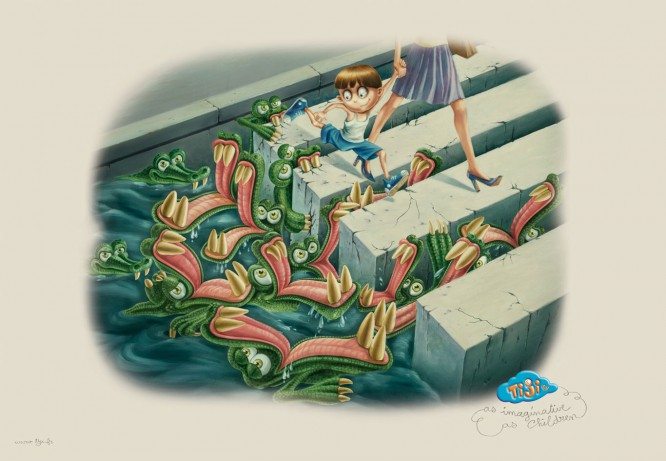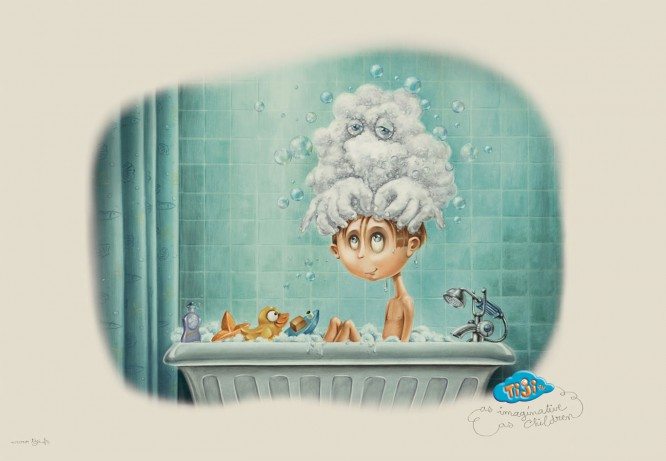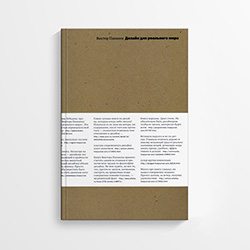4 ways to overcome the creative block and boost creativity
4 ways to overcome the creative block and boost creativity
The article refers mostly to the visual arts, but also applies to other areas of creativity.
What is a creative block
Many of those who decide to start their path in the visual arts, or have recently ascended it, are faced with such a problem as a creative block, stupor, call it what you want. This is a kind of feeling of fear, fear of not living up to your expectations, doing a job badly, worse than last time, being criticized. This state manifests itself in everyone in different ways: lack of inspiration, fear of a blank slate, all kinds of creative prejudices, an instant escape from the head of all ideas, and so on. Someone shows only one of the listed points, while someone, as they say, has the whole bouquet. Fortunately, everything can be solved.
We analyze the problem
So, as it usually happens. You sit down at the table, lay out the tools, materials, prepare and here you have a blank sheet of paper and … there are several options for a negative development of events:
First
You are waiting for inspiration. You wait, you wait, but it still doesn’t come. Now, a few words about inspiration. To begin with, the concept is too abstract and overestimated. Many equate it with a kind of blessing that comes to the chosen ones at the right time, and without which the creative process is simply impossible.

Do you think the in-demand illustrators, overwhelmed with orders, have a hand muse with them? Not at all. Inspiration is far from being enlightened from above. A sudden idea is only a small part that leads to the result you need. Experience, knowledge, curiosity and hard work play a much larger role. You need creative passion, a desire to grow and develop in the chosen direction. And a simple “I want to be able” is not enough, you need to develop a habit of work and practice.
This leads to the simplest and most effective solution to the problem. As the saying goes, appetite comes with eating, so the best way to attract a muse is to start. Even if not from the main job, then you just need to have a draft, sketchbook, whatever for a creative warm-up. This practice solves the second problem that often arises at the beginning of the creative process.
Second
Here you are sitting, there is a sheet in front of you, and even if the idea came, and the muse settled in your head, the so-called fear of a blank sheet often arises. Various reasons contribute to this factor: it may be a lack of skill, excessive perfectionism, when you expect perfect results from yourself and are afraid to stumble. Here, again, the most effective way out is to start.
In this case, drafts or filling the space, getting rid of the blank sheet, so to speak, will help again. More on the latter.
You’ve probably noticed how sometimes your hands itch when you see not a white sheet in front of you, but, for example, craft, gray, ivory, even black. Psychologists, for example, have found that the yellow tint of paper promotes increased brain activity and creativity. So, if you are “scared” by a virgin blank sheet, start by filling in parts of the background, then the fear will pass and you can proceed to the main part. As for the fear of not living up to your expectations, everything is very trivial here, just practice. No one is a master the first time around, and even an experienced illustrator doesn’t always get the perfect result right off the bat.
Practice is fundamental to success in any field. Warm-up has the same meaning in creativity as in sports. Work only on insight can and will bring the proper result, but the moment of reaching the desired level in this situation will be very far away. The more drawings “on the table”, the greater the likelihood of success when working on a serious project.
The third
Another common reason that interferes with being productive is a variety of creative biases. They mainly come from the conservative academic school. For example, statements that a real artist should not use auxiliary materials such as a ruler, compasses, patterns, he should be able to draw a straight line, a circle himself, cannot use a stencil, cannot copy from a photo, and even more so copy other people’s work.
So, if you try, the earth will not stop. I’m not saying that the old school has a bad effect on creativity, only prohibitions negatively affect. The creative environment develops very actively and dynamically, and in order to achieve the set task, you should not neglect something that can help you with this. Yes, the ability to draw a straight line is definitely your plus, but there is nothing wrong with using some kind of auxiliary materials.
The stencil, for example, has been used since ancient times, archaeologists have found images created using this technique back in the Paleolithic period, which means that they are more than 30,000 years old. Now this is a whole trend in street art, which is gaining immense popularity every year and is constantly evolving. So why forbid yourself to use this invention and combine it with other techniques?

As for sketching from photos and copying other people’s works, a beginner can often hear reproaches in his address that the artist should draw from life, or from his head. Drawing from life is certainly a very rewarding practice, but not everyone and not always can afford such a luxury. And to draw “from the head” you need to at least carefully study the subject. And even if you have perfect memory, some details will be lost anyway. There is nothing wrong with using images taken from the internet, quite the opposite. For example, for each more or less detailed work, I create an auxiliary folder in which I save photos of various objects I have taken that are necessary for high-quality work. And if you can’t take a picture, the great and mighty Internet comes to the rescue.
Speaking about copying other people’s work, the main thing here is to observe the fine line between imitation and giving copies of your ideas. The latter is an option for the desperate, and does not apply to us, creators. As for the first, for those who are tormented by conscience, I will tell you about such a concept as homage. In art, homage means imitation work as a sign of respect for an artist, musician, etc. As well as the study of the features of someone else’s creativity and processing them to create your own work There is nothing wrong with being inspired by the work of experienced craftsmen and thereby improving your skills. At the initial stage of creativity, such work “on the table” will help determine your preferences, further direction and elementary “fill your hand”.

Fourth
And last but not least, a problem that often arises at the beginning of the creative process – lack of ideas. There are many ways to combat this phenomenon. Based on my experience, I will tell you about the main and most effective ones.
It often happens that ideas come suddenly, whenever you want, but not when you are sitting in front of a blank slate and are ready to create. So, get into the habit of “catching” these ideas, write down all the interesting things that come to mind, or better still support them with a sketch. If you have a specific task in front of you, and you are thinking about its solution, you can capture the key points of the thought process, and, based on them, form the big picture. In general, the work of an illustrator includes more than just the skills of an artist. To add zest to the work, you need to do a lot of work with your head, and writing down thoughts on this matter greatly facilitates the process.

And so that there are more thoughts, and they come more often, a second habit comes to the rescue, which is much more difficult to develop, but it will significantly embellish your life. Look at things around you from a different angle, for example, start looking at the world through the eyes of a child. With curiosity, with a million questions about everything, remember your childhood, the impression that everyday things made on you today. Stretch your imagination and get used to finding interesting things in your surroundings. One example of an interesting illustration of a child’s view of the world can be seen in the illustrations by the artist Pierrette Diaz.


Several additional options, to varying degrees, solve all of the above problems:
– Cultural events. Visit exhibitions, theater as often as possible, events related to the creative movement. Such experience plays a big role in the formation of taste, and the desire to create after such events appears by itself. Be observant, and often walk your observation in places where you can aesthetically pamper yourself. And looking at the paintings live is much more useful and interesting than their photos, you can catch the movements of strokes or strokes, see the texture of the materials used, etc.
– Surround yourself with beautiful things. Buy books with beautiful graphics, vending postcards, in extreme cases, you can print images found on the Internet. Storing inspiring beauty only electronically is not as effective. Let it be not only a source of ideas, but also a designation of the level to which you should strive.
– Collecting. Start collecting beautiful things on a specific topic. It can be anything from jars of sand or shells from different beaches you visit, to interesting original business cards and tags. Interesting stones, butterflies, herbarium, stamps, a lot of options, choose what you want. Such finds can be both a source of inspiration and part of your creative experiments.

Summing up, I would like to share several sources of inspiration and food for the mind:
– Ernst Haeckel “Beauty of Forms in Nature”
– Johannes Itten “The Art of Color”
– Johannes Itten “The Art of Form”
– Sarah Simblet Drawing. Complete collection of techniques. A new practical approach to image transfer “
– Magazine “Beamused” Creative successes! Don’t be afraid to get started and don’t be lazy to practice all the time!
Author: Elvira Yanushko
Source: say-hi
…


